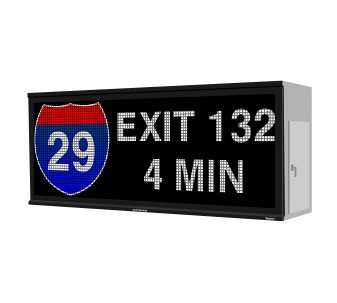Highway dynamic message signs (DMS) from LED display and scoreboard systems manufacturer Daktronics are vulnerable to cyberattacks, the Department of Homeland Security’s ICS-CERT (Industrial Control System Cyber Emergency Response Team) has warned.

In an alert published on Thursday, ICS-CERT revealed that the Daktronics Vanguard DMS configuration software has a default password that can be used to remotely access highway signs. Initially, the Federal Highway Administration informed ICS-CERT of a hardcoded password, but Daktronics has clarified that it’s actually a default password that can be changed upon installation.
A proof-of-concept for such attacks is publicly available, which is why entities responsible for highway signs are advised to take measures. Daktronics and the Federal Highway Administration recommend changing the default password to a strong one, placing the displays on private networks, and disabling telnet, webpage, and web LCD interfaces if not needed.
Traffic signs, particularly ones used in construction areas, are often hacked to display amusing messages. The control boxes on these displays are in many cases left unprotected and since they’re on ground-level, it’s not difficult to hijack them.
Recently, highway sign hacking has become more common. At the end of May, someone hijacked several signs in North Carolina and made them display a message which read “Hack by Sun Hacker.”
A Twitter user with the online moniker “SUN HACKER” described the following method that can be used to hack road signs: “1 Change the lan of VPN to INTERNET protocol. 2- Scan all the range of the IP on port 23. 3- bruteforce the password. 4- add your message.”
Highway signs are not the only component of the US road transportation system vulnerable to cyberattacks. In April, Cesar Cerrudo, CTO of research firm IOActive, revealed that the traffic control systems used in the United States and various other countries around the world contain flaws that can be exploited by an attacker to cause traffic jams and other problems at intersections, freeways and highways.














